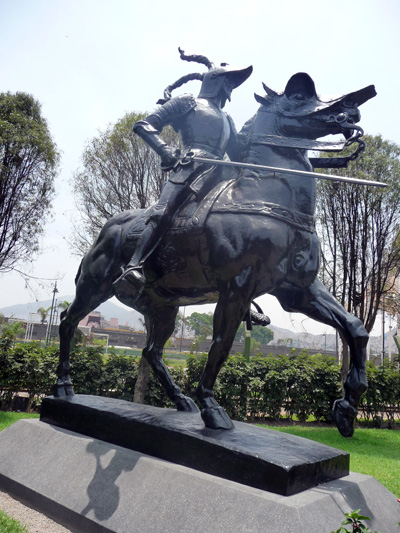
Sixth in a Series
By Donald H. Harrison

For us, a recent voyage aboard MS Rotterdam began in Callao, the port serving nearby Lima, Peru. Inside the Cathedral on Lima’s Plaza des Armas, one can find the tomb of the conquistador Francisco Pizarro, who nearly 470 years after his assassination is still a controversial figure in Peru.
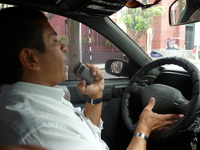
As guide Renato Monteverde of taxilimaperu.com narrated the story, Pizarro is hated in Peru for having slain so many Incas during the time of conquest. A well-known statue of him astride a horse once was located in front of the Cathedral, according to Monteverde, but the church didn’t consider a horseman with a sword consistent with its image as the helper of the people. So, said Monteverde, the statue was moved by city authorities in front of the presidential palace. But the president—being a politician who wants to court the support of the people—didn’t want so controversial a figure in front of his building either. Spain was asked to take the statue back, but according to Monteverde’s version, the former colonial power would do so only if Peru paid for the shipping. Eventually, the statue was moved to the catacombs by the river, in the hope, according to Monteverde, that it would be someday washed away.
While one might quibble with the historical veracity of Monteverde’s tale, it certainly portrayed in most vivid fashion how some people feel about the Spaniards who brought their weapons and their diseases to the Incan Empire. At least for some parts of the population, Pizarro is an absolute anathema.
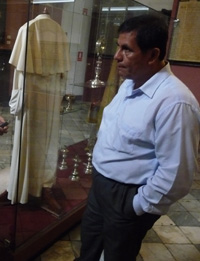
Fernando Lopez Sanchez, an historian trained by Lima’s Catholic University who today serves as chief archivist at the Cathedral, offers a more forgiving assessment of the conquistador. “History tells us the facts that took place; it is up to us to interpret and understand the time in which he lived,” Lopez said. “He was doing what all the soldiers of the time were doing, which was conquest.”
However, he added, “The intentions of Pizarro and the conquistadors was not just to come in and kill everything in sight; the intention was to try to spread faith to a population. At first they tried to negotiate with the indigenous people, but once the negotiations failed, it turned into violence.”
It is true that many Incas died, “but what you have to take into account was that most of the deaths were not caused by Spanish arms but by the diseases” they unknowingly brought to South America with them.
Pizarro founded Lima in 1535, and he is buried in the cathedral “because the city would not have been established were it not for Pizarro and it was his dying wish to be buried in the cathedral.”
The conquistador of Mexico, Hernan Cortes, was a second cousin of Pizarro’s. Cortes’ conquest of the Aztecs in 1520 and Pizarro’s conquest of the Incans in 1532 are often equated. However, said Lopez, “although there are similarities in the Mexican and the Peruvian pasts, the Mexicans today are ultra nationalists, whereas Peruvians are more open to people from different cultures. Mexicans view their history with more hatred. They hate Cortes, they say ‘he killed us all.’ What is happening here in Peru is that we try to understand the Spanish instead of just hating them.”
Spanish rule lasted in Peru for nearly 300 years, until 1821, when the Argentine general Jose de San Martin liberated Lima and became known as the Protector of Peru.
The next port of call for MS Rotterdam was Guayaquil, Ecuador, where San Martin in 1822 reportedly had his only meeting ever with the liberator of northern South America, Simon Bolivar. Nobody knows for certain what the two men said, although it is believed that San Martin acceded to the idea of modern-day Ecuador and Peru becoming part of Gran Colombia, the confederation of South American states that also included modern day Colombia and Venezuela.
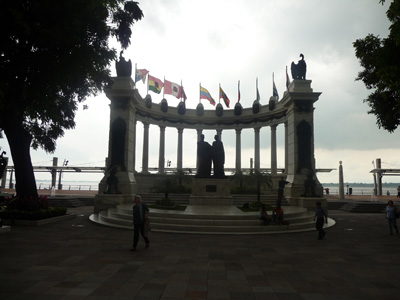
The content of the meeting between the two great liberators today is still a source of speculation among historians. The fact that it was held in Guayaquil is a matter of great pride to the port city, which in its commemoration built La Rotunda, a heroic sized monument on the Malecon, a wide walkway along the Guayas River. Those interested in Spanish colonial history can easily combine a visit to La Rotunda with a short walk to the Museo Nahim Isaias, in which a banker of Lebanese descent compiled a storehouse of Spanish colonial art, most of it on Christian religious subjects.
After stopping in Manta, Ecuador; Puerto Caldera, Costa Rica, and Puerto Chiapas, Mexico; MS Rotterdam pulled into Huatulco, Mexico, which in association with Veracruz on Mexico’s Atlantic Coast and Acapulco on Mexico’s Pacific Coast was an important port in keeping Spain’s colonial empire in Latin America together. Acapulco was the next port after Huatulco on MS Rotterdam’s itinerary.
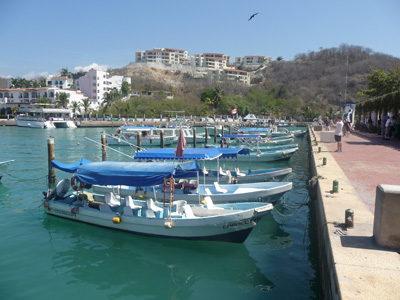
Spain sent European goods and crops across the Atlantic Ocean to Veracruz, where they were sold at market for the silver mined and coined in Mexico. Afterwards, the European goods were sent to Huatulco and Acapulco. Those that went to Huatulco were put onto ships for Peru, where the goods were exchanged for Peruvian precious metals, furniture and crops. European goods that went to Acapulco were put on galleons bound for Manila in the Philippines, where the goods and Mexican silver were exchanged for the silks, spices, and ceramics of the Far East.
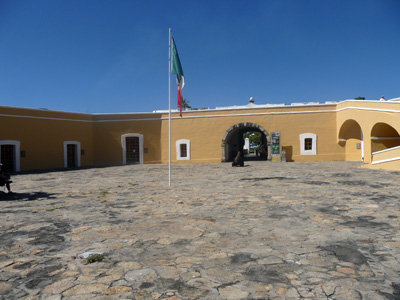
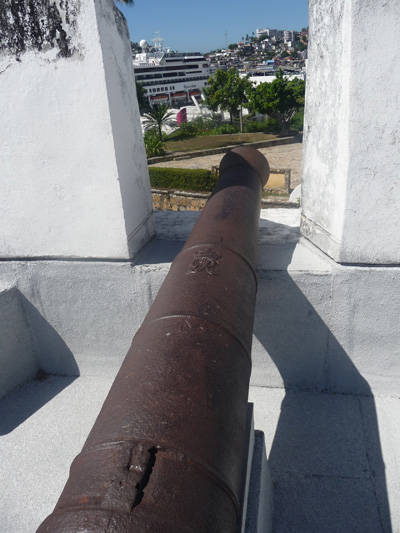 Fort San Diego in Acapulco is located across the street from the cruise pier, making it a popular destination for tourists. Shaped like an irregular five-pointed star, Fort San Diego had a commanding view of ocean and land approaches to Acapulco. Its cannons were able to protect the treasures of the galleons from pirates and other enemies of the Spanish crown.
Fort San Diego in Acapulco is located across the street from the cruise pier, making it a popular destination for tourists. Shaped like an irregular five-pointed star, Fort San Diego had a commanding view of ocean and land approaches to Acapulco. Its cannons were able to protect the treasures of the galleons from pirates and other enemies of the Spanish crown.
In 1813, however, the Mexican revolutionary Jose Maria Morelos was able to capture the fort in Acapulco, effectively bringing to an end the era when the Pacific Ocean was considered a Spanish lake ruled by the Manila galleons.
From Acapulco, MS Rotterdam proceeded to Cabo San Lucas, which most people know for the famous stone arches that mark the point where the Sea of Cortes and the Pacific Ocean divide. In Spanish colonial history, this picturesque port spelled danger because it was a favorite hiding place for British pirates ready to plunder the galleons.
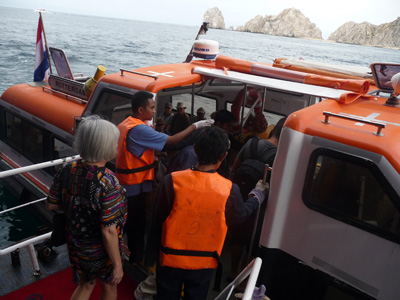
Juan Rodriguez Cabrillo, a Portuguese sailor in the employ of Spain, passed Cabo San Lucas en route to Alta California. He claimed modern-day San Diego Bay for Spain in 1542, naming the area San Miguel. However, Cabrillo’s discovery was all but forgotten for six decades. After the pirate Thomas Cavendish made short work of the galleon Santa Ana in 1587, Spain realized it had to do more to protect the Manila-Acapulco route, perhaps by establishing forts in areas where the pirates were likely to strike.
In 1602, Spain authorized Sebastian Vizcaino to explore the coast of Alta California. Not recognizing the area that Cabrillo had named San Miguel, Vizcaino gave the bay and the city that would spring up in its vicinity its modern name of San Diego. Homeport to the MS Rotterdam, San Diego was our final port in a brief, but fascinating, excursion into Spanish colonial history.
Next: Animals in Cruise Ports